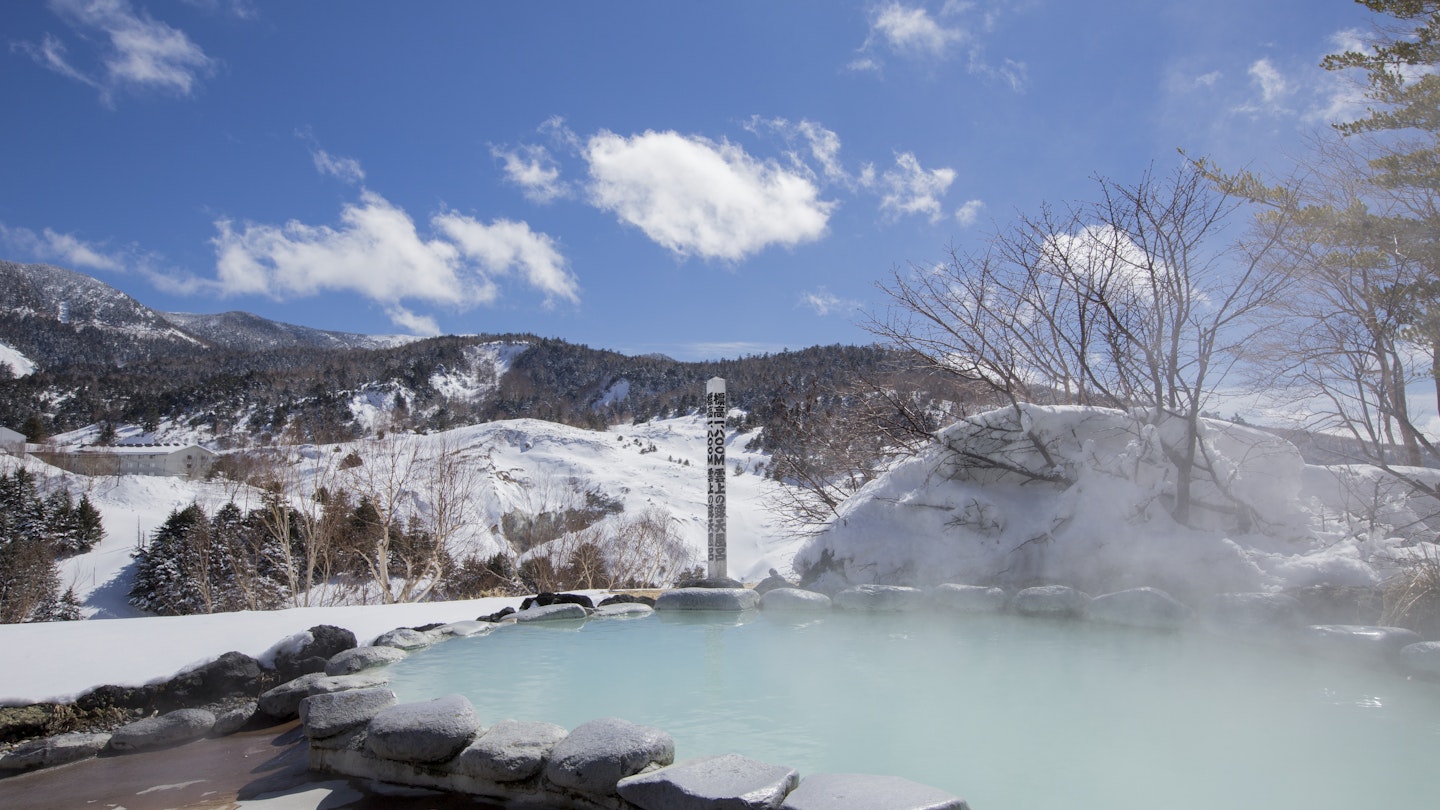
Take a look at a map of Japan and it’s easy to see why this island nation has such a connection to the sea. Of the country’s 47 prefectures, only eight do not have a coastline.
However, the mountains of Japan’s interior are equally beautiful and revered for their water sources. Just an hour north of Tokyo, Gunma Prefecture is one of those eight landlocked prefectures. What it lacks in sand or surf, its stunning mountainous terrain compensates with its incredible water-based activities.
From the invigorating natural forces of its rivers and waterfalls to the calming stillness of its picturesque lakes and more than 400 natural onsen (100 of which feature accommodations), to its world-class snow scene, Gunma makes its abundant waters available to everyone. For an authentic experience, one can stay in a traditional Japanese ryokan in the many onsen towns and enjoy on-site hot spring bathing after each day’s sightseeing.
Whether your objective is to get your heart pumping or to relax and unwind, here are some of Gunma Prefecture’s must-see water-themed highlights.

Kusatsu Onsen
Kusatsu Onsen is one of the best and most unique onsen (hot springs) resort towns in Japan. Located in the town center, the steaming yubatake or “hot water field” gushes out an incredible 8,500 gallons of natural onsen water with a pH value of almost 2.1 every minute, making it the highest volume and one of the most acidic hot springs in Japan. Place a nail in the water, and it will dissolve in a week.
Its unique mineral qualities establish Kusatsu Onsen as a particularly renowned center for healing and wellness. Moreover, it takes 30 years for the water to attain this level of therapeutic benefit. Starting as rain and melted snow on Kusatsu’s volcanic Mount Shirane, it seeps into the ground slowly absorbing minerals. Heated by magma along the way, it finally reaches the lower elevation of the town, where it’s pumped out in spectacular fashion in the yubatake.

A visit to Kusatsu feels nothing short of luxurious, where visitors can spend several days moving from one hot spring to the next. One must not miss the staggering 5,380-square-foot Sainokawara Rotenburo, one of the largest outdoor baths in the country, or the adjacent Sainokawara Park, featuring rejuvenating footbaths made of hot streams and ponds.
For indoor bathing, Otakinoyu offers the most variety, including the awaseyu (or partition baths), a unique tradition where one starts at a bath of lower temperature and gradually moves to the hottest.

Minakami Snow and Adventure Sports
Gunma Prefecture has long been a favorite for nature enthusiasts and adrenaline seekers close to the country’s capital. During winter, skiing, snowboarding, and snowshoeing are all highly popular activities.
About three miles north of the onsen town of Minakami, Tanigawadake Tenjindaira, or ‘Tenjin’ for short, ranks among the top ski destinations in Japan. With snowfall averaging around 12-16 feet and a base exceeding 9 feet, it offers exceptional powder. Advanced skiers can hire a guide to explore Tenjin’s legendary backcountry options, considered to be some of Japan’s best big mountain terrain.

Adventure seekers shouldn’t miss canyoning in Minakami, recognized as the biggest canyoning destination worldwide. From late April to late October, outdoor enthusiasts can explore gorgeous nearby canyons by swimming, scrambling over rocks, sliding down chutes, jumping into pools, and rappelling down waterfalls.
Furthermore, Minakami is a premier location for white-water rafting. In spring, the Tone River boasts raging rapids fueled by melting snow, while summer provides a more gentle experience.

Lake Okushimako
Located just a few miles from Shima Onsen, Lake Okushimako is a man-made lake created by damming the Shima River. Although it may have artificial origins, it is the natural beauty that lures visitors, particularly its striking cobalt blue hue—locally referred to as “Shima blue”—a color claimed to be unique to this area.
In the warmer months, visitors can explore the lake at a relaxed pace by canoe or paddleboard, delighting in the transparent waters and surrounding tree-covered mountain landscape—fresh and green during spring and summer, while ablaze with fiery oranges and reds in autumn.

Oze National Park
Gunma’s plentiful waters cater not only to those eager to immerse themselves in them, but also to hikers seeking adventure. A visit to Oze National Park offers elevated boardwalks allowing visitors to explore Ozegahara Marsh and around Lake Ozenuma.
The expansive Ozegahara Marsh spans over three miles in length and 2,000 yards in width. Flanked by Mt Shibutsu and Mt Hiuchigatake, this area features hundreds of pools. The wooden-planked trails enable one to traverse through the terrain, allowing for immersion in nature while keeping feet dry.
The changing seasonal landscape creates stunning natural scenes, especially the sea of Mizubasho (Asian skunk cabbages) that bloom throughout Ozegahara Marsh from late May to mid-June, along with the yellow day lilies (early July-early August) and the vibrant autumnal grasses (mid-September-early October).

Fukiware-no-taki Falls
Gunma Prefecture is endowed with numerous waterfalls; however, the 23-foot-tall 100-foot-wide Fukiware-no-taki Falls is one not to be overlooked. Accessible from mid-April to mid-December in Numata, this waterfall is nicknamed the “Niagara of the East.” Visitors can marvel at the power of this striking natural water feature while relishing the invigorating mist that permeates the air.
Additionally, one can do a loop of the ravine to encounter other waterfalls, mysterious rock formations, and cross bridges, including the Ukishima-bashi suspension bridge, which offers a unique perspective of the breathtaking landscape.

Gunma Prefecture is easily accessible by public transportation. Bullet trains from Tokyo reach Minakami in just 70 minutes, and Karuizawa (Nagano) in 70 minutes, from where it is about 1.5 hours by bus to Kusatsu Onsen. Although a car can be useful for in-prefecture exploration—where local transportation options may be limited—visitors should remain aware that some roads close during winter.





